How to Grow Dahoon Holly
- March 22, 2024
- 0 comment
Dahoon Holly (Ilex cassine) is a versatile and visually striking evergreen shrub native to the southeastern United States. With its glossy green foliage and vibrant red berries, Dahoon Holly adds year-round beauty to any landscape. Whether you’re a seasoned gardener or a novice enthusiast, cultivating Dahoon Holly can be a rewarding experience.
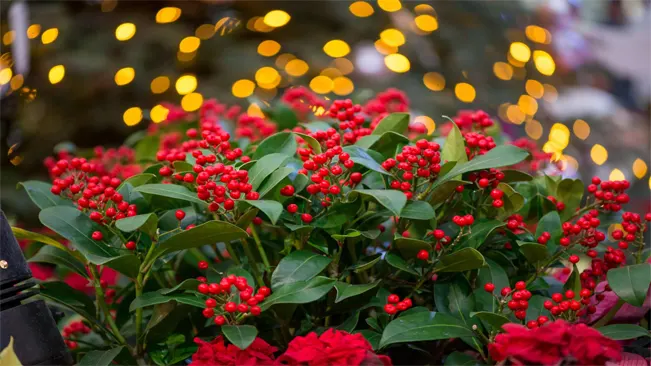
List on How to Grow Dahoon Holly
- Selecting the Right Location
- Planting
- Watering
- Fertilizing
- Pruning
- Pest and Disease Management
- Propagation
- Winter Care
Selecting the Right Location
Selecting the right location is crucial for the successful growth of Dahoon Holly (Ilex cassine). This versatile shrub can thrive in a range of lighting conditions, making it adaptable to different landscapes.
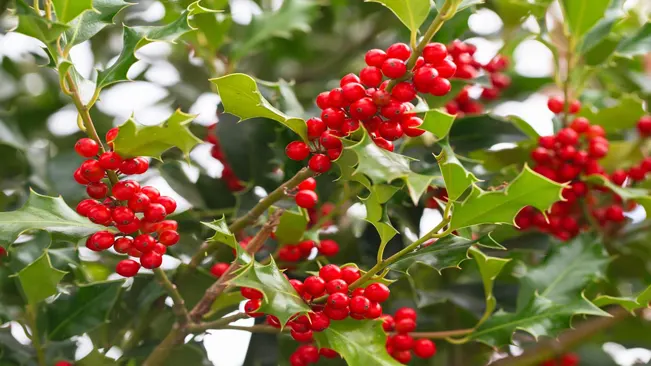
- Sunlight Requirements: Dahoon Holly can tolerate partial shade to full sun. However, for optimal growth and berry production, it’s best to select a location that receives at least four to six hours of sunlight per day. Areas with morning sunlight and afternoon shade or dappled sunlight are ideal. Avoid planting Dahoon Holly in areas with dense shade, as it may result in sparse foliage and reduced berry production.
- Soil Conditions: Dahoon Holly prefers well-drained soil that is slightly acidic, with a pH level between 5.0 and 6.5. Before planting, test the soil pH using a soil testing kit available at garden centers or through your local agricultural extension office. If your soil is too alkaline (higher pH), you can amend it with organic matter such as compost, peat moss, or pine bark mulch to lower the pH and improve soil texture. Incorporating organic matter also helps to enhance soil fertility and moisture retention, which is beneficial for the growth of Dahoon Holly.
- Drainage: In addition to soil pH, ensure that the chosen location has good drainage. Dahoon Holly does not tolerate waterlogged or poorly drained soil, which can lead to root rot and other diseases. If you have heavy clay soil or poor drainage in your garden, consider planting Dahoon Holly in raised beds or mounds to improve drainage and prevent waterlogging.
- Microclimates: Pay attention to microclimates within your garden, as they can influence temperature, moisture levels, and sunlight exposure. Factors such as nearby buildings, trees, or bodies of water can create microclimates that may affect the growth and health of Dahoon Holly. Choose a location that provides protection from harsh winds and extreme weather conditions, especially in colder climates where frost or freezing temperatures may occur.
Planting
The optimal time to plant Dahoon Holly is in the spring or fall. These seasons provide mild temperatures and adequate moisture, which help the plant establish its roots without the stress of extreme weather conditions.
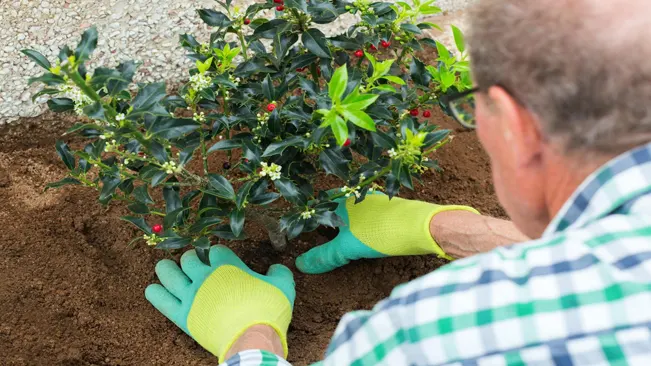
Site Selection
- Choose a planting location that receives partial shade to full sun. Dahoon Holly is adaptable to different light conditions but prefers a spot with at least four to six hours of sunlight daily.
- Ensure the soil is well-drained and slightly acidic, with a pH level between 5.0 and 6.5. If the soil is too alkaline, amend it with organic matter such as compost or peat moss to lower the pH and improve soil structure.
Digging the Hole
- Dig a hole that is twice as wide as the root ball of the Dahoon Holly but no deeper than the height of the root ball. This provides ample space for the roots to spread out while preventing the plant from being planted too deeply, which can suffocate the roots.
Planting
- Carefully remove the Dahoon Holly from its container, taking care not to damage the roots. Gently loosen any compacted roots to encourage outward growth.
- Place the plant in the center of the prepared hole, ensuring that the top of the root ball is level with the surrounding soil. Avoid planting the shrub too deeply, as this can lead to root rot.
- Backfill the hole with the excavated soil, gently firming it around the roots to eliminate air pockets. Water the newly planted shrub thoroughly to settle the soil and provide moisture to the roots.
Mulching
- Apply a layer of organic mulch, such as wood chips or shredded bark, around the base of the Dahoon Holly. Mulch helps retain moisture in the soil, suppresses weed growth, and regulates soil temperature.
- Keep the mulch a few inches away from the trunk of the shrub to prevent moisture buildup and potential rotting of the stem.
Watering
Watering is a critical aspect of caring for Dahoon Holly plants, especially during their initial establishment phase.
- Consistent Moisture: It’s essential to keep the soil consistently moist, particularly during the first year after planting. This helps the young plants establish their root systems and adapt to their new environment. Aim to maintain a slightly damp soil condition without allowing it to become waterlogged.
- Deep Watering: When watering Dahoon Holly, it’s best to water deeply but infrequently. Deep watering encourages the development of deep root systems, which enhances the plant’s stability and drought tolerance. Instead of frequent shallow watering, provide a thorough soaking that penetrates the soil to reach the roots.
- Adjusting for Environmental Conditions: During periods of drought or extreme heat, it’s essential to adjust the watering frequency to prevent the soil from drying out completely. Hot and dry weather conditions can cause moisture to evaporate quickly from the soil, leaving the plants vulnerable to stress and dehydration. Monitor the soil moisture regularly and increase watering as needed to keep the soil consistently moist.
- Avoiding Overwatering: While it’s crucial to maintain adequate moisture levels, it’s equally important to avoid overwatering Dahoon Holly plants. Overly saturated soil can lead to root rot, a fungal disease that damages the plant’s root system and compromises its health. To prevent root rot, ensure that the soil has proper drainage and avoid allowing water to accumulate around the roots.
- Signs of Water Stress: Pay attention to signs of water stress in Dahoon Holly plants, such as wilting foliage, yellowing leaves, or leaf drop. These symptoms indicate that the plant is not receiving sufficient water and may require more frequent watering. Conversely, if you notice waterlogged soil or signs of root rot, reduce watering and improve drainage to prevent further damage to the plant.
Fertilizing
Choosing the Right Fertilizer
- When selecting a fertilizer for Dahoon Holly, opt for a balanced, slow-release formula designed for acid-loving plants. Look for fertilizers labeled for use on evergreens or specifically formulated for hollies.
- Balanced fertilizers have equal proportions of nitrogen (N), phosphorus (P), and potassium (K), such as a 10-10-10 or 15-15-15 blend. These nutrients support overall plant growth, root development, and flowering.
Timing and Application
- Apply fertilizer to Dahoon Holly in early spring, just before the start of the growing season. This timing allows the plant to uptake essential nutrients as it begins actively growing.
- Follow the manufacturer’s recommendations regarding dosage and application rates, as they may vary depending on the brand and formulation.
- Spread the fertilizer evenly around the base of the plant, avoiding direct contact with the stems or foliage. Use a handheld spreader or apply by hand, then water thoroughly to help the nutrients penetrate the soil.
Avoiding Late Season Fertilization
- It’s crucial to refrain from fertilizing Dahoon Holly in late summer or fall. Fertilizing during this time can stimulate new growth, which may not have sufficient time to harden off before winter.
- Tender new growth is more susceptible to damage from frost or freezing temperatures, increasing the risk of cold injury to the plant.
- By withholding fertilizer in late summer and fall, you allow Dahoon Holly to naturally slow its growth and prepare for dormancy without the added stress of tender new shoots.
Pruning
Prune Dahoon Holly in late winter or early spring, ideally before new growth begins to emerge. This timing allows the plant to recover from pruning stress and encourages vigorous growth during the growing season.
Purpose of Pruning
- Promoting Airflow: Removing dead, diseased, or damaged branches helps improve airflow within the shrub. Adequate airflow reduces the risk of fungal diseases and pest infestations by minimizing moisture buildup and creating an environment less favorable for pests.
- Enhancing Appearance: Pruning allows you to shape the shrub according to your aesthetic preferences. By selectively removing branches, you can maintain a compact and tidy appearance, whether you prefer a formal hedge or a more naturalistic shape.
Techniques
- Removing Dead or Diseased Branches: Begin by inspecting the shrub for any dead, diseased, or damaged branches. Use clean, sharp pruning shears to make clean cuts just above the branch collar—the swollen area where the branch meets the trunk or main stem. Removing these branches not only improves the plant’s appearance but also prevents the spread of diseases and pests.
- Thinning Out: To improve airflow and reduce density within the shrub, selectively thin out crowded or crossing branches. Identify branches that are growing inward toward the center of the shrub or rubbing against each other. Remove these branches to open up the canopy and allow light and air to penetrate the interior of the plant.
- Shaping: Depending on your desired outcome, shape the shrub by selectively pruning branches to achieve the desired form. Whether you prefer a rounded, pyramidal, or naturalistic shape, step back periodically to assess your progress and make adjustments as needed.
Pest and Disease Management
Pest and disease management is an important aspect of caring for Dahoon Holly to ensure its health and vitality. While Dahoon Holly is generally resilient against pests and diseases, occasional issues may still arise.
Common Pests
- Scale Insects: These small, immobile pests can be found on the stems and leaves of Dahoon Holly, sucking sap from the plant. Look for scale insects as small bumps on the plant’s surface. You can control scale infestations by applying insecticidal soap or horticultural oil directly to the affected areas.
- Spider Mites: Spider mites are tiny arachnids that feed on the undersides of leaves, causing stippling and webbing. Regularly inspect the foliage for signs of spider mite activity, such as fine webbing and yellowing leaves. Rinse the plant with a strong stream of water to dislodge spider mites, or use insecticidal soap to control infestations.
- Aphids: Aphids are small, soft-bodied insects that feed on the sap of new growth, causing distortion and yellowing of leaves. Check the undersides of leaves for clusters of aphids and treat infestations with insecticidal soap or horticultural oil.
Fungal Diseases
- Leaf Spot: Leaf spot is a common fungal disease that appears as small, dark spots on the leaves of Dahoon Holly. To prevent leaf spot, avoid overhead watering, which can promote fungal growth. Remove and destroy infected leaves, and apply a fungicide labeled for leaf spot control if the problem persists.
- Powdery Mildew: Powdery mildew is another fungal disease that affects Dahoon Holly, presenting as a white powdery coating on the leaves. Improve air circulation around the plant by pruning neighboring vegetation and thinning out dense growth. Apply fungicides containing sulfur or potassium bicarbonate to control powdery mildew outbreaks.
Sanitation Practices
- Regularly remove fallen leaves, debris, and dead plant material from around the base of the Dahoon Holly shrub. This helps eliminate potential breeding grounds for pests and pathogens.
- Prune out any diseased or damaged branches promptly to prevent the spread of infection within the plant. Disinfect pruning tools between cuts with a solution of 1 part bleach to 9 parts water to avoid transferring pathogens.
Integrated Pest Management (IPM)
- Implementing an integrated pest management approach involves combining cultural, mechanical, and biological control methods to manage pests and diseases effectively.
- Encourage natural predators such as ladybugs, lacewings, and predatory mites to help keep pest populations in check.
- Monitor the Dahoon Holly regularly for signs of pests and diseases, intervening early to prevent widespread damage.
Propagation
Propagation of Dahoon Holly from semi-hardwood cuttings is a straightforward and effective method for expanding your holly collection or sharing plants with friends and family.
Selecting Cuttings
- Semi-hardwood cuttings are taken from the current season’s growth that has started to mature but is not yet woody. Typically, late summer to early fall is the ideal time to collect these cuttings.
- Choose healthy branches with no signs of disease or damage. Select cuttings that are 4 to 6 inches long, with several sets of leaves along the stem.
Preparing the Cuttings
- Use clean, sharp pruners to take cuttings from the parent plant. Make a clean, diagonal cut just below a leaf node. Remove any leaves from the bottom half of the cutting to reduce moisture loss and prevent rot.
- If you’re taking multiple cuttings, place them in a plastic bag or container with a damp paper towel to keep them from drying out while you prepare the rest.
Rooting Hormone Treatment
- Dip the cut end of each cutting into rooting hormone powder or gel. Rooting hormone contains auxins, which stimulate root development and increase the success rate of propagation.
- Shake off any excess powder and tap the cutting gently to remove loose particles. Avoid contaminating the rooting hormone container with moisture or plant material to maintain its effectiveness.
Planting the Cuttings
- Fill small containers or trays with a well-draining rooting medium, such as perlite, vermiculite, or a mix of peat moss and sand. Moisten the medium slightly before planting to ensure good contact with the cuttings.
- Insert the treated end of each cutting into the rooting medium, burying at least one node beneath the surface. Space the cuttings evenly to prevent overcrowding and promote airflow around the stems.
Providing Ideal Conditions
- Place the containers in a warm, bright location with indirect sunlight. Bottom heat from a propagation mat or heating pad can expedite root growth, but avoid excessive heat that may cause the cuttings to dry out.
- Maintain consistent moisture levels in the rooting medium by misting the cuttings regularly or covering the containers with a clear plastic dome to create a mini greenhouse effect. Check the moisture level frequently to prevent drying out or waterlogging.
Transplanting Rooted Cuttings
- After several weeks, check the cuttings for signs of root development by gently tugging on them. Once roots have formed and are at least an inch long, the cuttings are ready to be transplanted into individual containers filled with potting soil.
- Handle the rooted cuttings carefully to avoid damaging the delicate roots. Water the transplanted cuttings thoroughly and place them in a shaded area for a few days to acclimate to their new environment.
- Gradually introduce the transplants to brighter light conditions over the course of a week or two to prevent sunburn and transplant shock.
Winter Care
During the winter months, providing proper care for Dahoon Holly is crucial to ensure its health and survival, especially for young plants or those newly established in the garden. Here’s a closer look at how to protect Dahoon Holly during the colder seasons
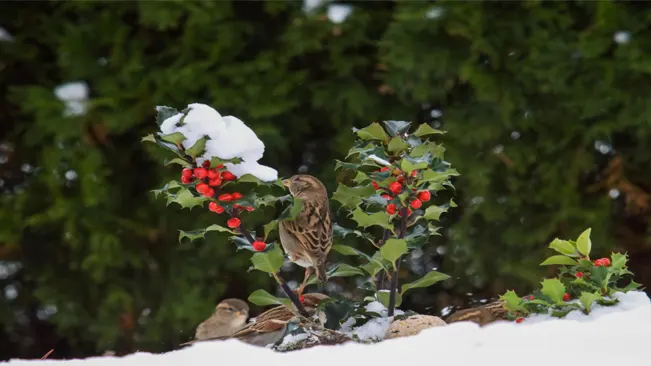
Winter Hardiness
- Dahoon Holly is generally hardy in USDA hardiness zones 7 through 10, meaning it can withstand temperatures as low as 0°F to 10°F (-17°C to -12°C). In these zones, Dahoon Holly can usually withstand typical winter conditions without significant damage.
Protection for Young Plants
- Young Dahoon Holly plants, particularly those in their first few years of growth, may be more susceptible to cold temperatures and frost damage. Providing them with some extra protection during winter can help ensure their survival and healthy growth.
Mulching
- One of the simplest and most effective ways to protect Dahoon Holly during winter is by applying a layer of mulch around the base of the plant. Mulch acts as insulation, helping to regulate soil temperature and protect the roots from freezing.
- Apply a 2 to 3-inch layer of organic mulch, such as wood chips, shredded bark, or compost, around the base of the plant. Extend the mulch layer out to the drip line, which is the outer edge of the plant’s canopy.
- Mulch also helps retain moisture in the soil, which is beneficial during periods of winter drought or when the ground is frozen and unable to absorb moisture.
Avoid Heavy Pruning
- It’s important to avoid heavy pruning of Dahoon Holly in late fall, as this can stimulate new growth that is particularly vulnerable to frost damage. Instead, schedule any pruning or shaping of the plant for late winter or early spring before new growth begins.
- Light pruning to remove dead, diseased, or damaged branches is acceptable at any time of year and can actually benefit the plant’s overall health by improving airflow and reducing the risk of disease.
Monitor Moisture Levels
- While Dahoon Holly is relatively drought-tolerant once established, it’s still important to monitor soil moisture levels during the winter months. In regions where winters are dry or when there’s little snowfall to provide moisture, supplemental watering may be necessary, especially during prolonged periods of cold or windy weather.
- Water the plant deeply but infrequently, allowing the soil to dry out slightly between waterings. Avoid overwatering, as waterlogged soil can lead to root rot and other problems, particularly in cold weather when the plant’s growth is slowed.
Conclusion
By following these tips and techniques, you can successfully grow Dahoon Holly and enjoy its beauty for years to come. Whether used as a specimen plant, hedge, or foundation planting, Dahoon Holly is sure to enhance any garden landscape with its evergreen foliage and festive berries.
FAQs (Frequently Asked Questions)
- What is the best time to plant Dahoon Holly?
- The ideal time to plant Dahoon Holly is in spring or fall when temperatures are mild and the plant can establish its root system before facing harsh weather conditions.
- The ideal time to plant Dahoon Holly is in spring or fall when temperatures are mild and the plant can establish its root system before facing harsh weather conditions.
- How much sunlight does Dahoon Holly need?
- Dahoon Holly prefers partial shade to full sun, meaning it should receive at least four to six hours of direct sunlight per day for optimal growth and berry production.
- Dahoon Holly prefers partial shade to full sun, meaning it should receive at least four to six hours of direct sunlight per day for optimal growth and berry production.
- What type of soil does Dahoon Holly prefer?
- Dahoon Holly thrives in well-drained, slightly acidic soil with a pH level between 5.0 and 6.5. Amending the soil with organic matter such as compost can improve soil structure and fertility.
- Dahoon Holly thrives in well-drained, slightly acidic soil with a pH level between 5.0 and 6.5. Amending the soil with organic matter such as compost can improve soil structure and fertility.
- How often should I water Dahoon Holly?
- Water newly planted Dahoon Holly regularly to keep the soil consistently moist, especially during hot and dry weather. Once established, water deeply but infrequently, allowing the soil to dry out slightly between waterings.
- Water newly planted Dahoon Holly regularly to keep the soil consistently moist, especially during hot and dry weather. Once established, water deeply but infrequently, allowing the soil to dry out slightly between waterings.
- Do I need to fertilize Dahoon Holly?
- Yes, Dahoon Holly benefits from an annual application of balanced slow-release fertilizer in early spring before new growth begins. Avoid fertilizing in late summer or fall to prevent stimulating new growth that may be vulnerable to frost damage.
- Yes, Dahoon Holly benefits from an annual application of balanced slow-release fertilizer in early spring before new growth begins. Avoid fertilizing in late summer or fall to prevent stimulating new growth that may be vulnerable to frost damage.
- How do I prune Dahoon Holly?
- Prune Dahoon Holly in late winter or early spring before new growth emerges. Remove any dead, diseased, or damaged branches, and shape the shrub as desired. Avoid heavy pruning, as Dahoon Holly blooms on old wood.
- Prune Dahoon Holly in late winter or early spring before new growth emerges. Remove any dead, diseased, or damaged branches, and shape the shrub as desired. Avoid heavy pruning, as Dahoon Holly blooms on old wood.
- Is Dahoon Holly susceptible to pests and diseases?
- While Dahoon Holly is relatively resistant to pests and diseases, it may occasionally encounter problems such as scale insects, spider mites, and fungal diseases like leaf spot and powdery mildew. Prompt treatment with appropriate pesticides or fungicides can help manage these issues.
- While Dahoon Holly is relatively resistant to pests and diseases, it may occasionally encounter problems such as scale insects, spider mites, and fungal diseases like leaf spot and powdery mildew. Prompt treatment with appropriate pesticides or fungicides can help manage these issues.
- Can I propagate Dahoon Holly?
- Yes, Dahoon Holly can be propagated from semi-hardwood cuttings taken in late summer or early fall. Rooting hormone can help encourage root development, and providing bottom heat can expedite the process.
- Yes, Dahoon Holly can be propagated from semi-hardwood cuttings taken in late summer or early fall. Rooting hormone can help encourage root development, and providing bottom heat can expedite the process.
- How can I protect Dahoon Holly during winter?
- To protect Dahoon Holly during winter, apply a layer of mulch around the base of the plant to insulate the roots and avoid heavy pruning in late fall, as new growth is vulnerable to frost damage.
- To protect Dahoon Holly during winter, apply a layer of mulch around the base of the plant to insulate the roots and avoid heavy pruning in late fall, as new growth is vulnerable to frost damage.
- When can I expect Dahoon Holly to produce berries?
- Dahoon Holly typically produces berries in late fall to winter, adding a pop of vibrant red color to the landscape. However, the plant may take several years to mature and begin fruiting regularly.
For more expert gardening and advice, explore our guides, discover top recommendations in our best section, and delve into in-depth product reviews in our review section. Happy Gardening.

Kristine Moore
Forestry AuthorI'm Kristine Moore, a seasoned garden landscaping professional with over 30 years of experience. My extensive career has been dedicated to transforming outdoor spaces into stunning, sustainable landscapes. With a deep understanding of horticulture, design principles, and environmental stewardship, I have become a respected figure in the field, known for creating harmonious, visually appealing, and eco-friendly gardens. My commitment to excellence and continuous learning in landscaping trends and techniques has solidified my reputation as an expert in garden design and implementation.



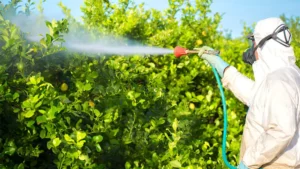









Leave your comment